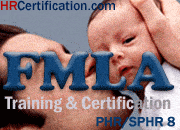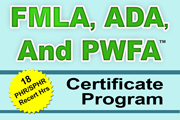
Communication Strategies for Managing Employee Leave
10/25/2025Clear, consistent communication is one of the most overlooked parts of effective leave management. Whether an employee is out for surgery, pregnancy, or a mental health condition, the way HR handles updates, documentation, and follow-up conversations can make or break trust—and compliance. This guide covers how to communicate employee leave clearly, compassionately, and in line with legal requirements like FMLA, ADA, and PWFA.
Why Communication Is Critical in Leave Management
Effective communication during an employee's leave is not just a courtesy; it's a core compliance function. When an employee is facing a health issue or family crisis, clear information from HR provides stability and reduces anxiety. From a business perspective, a structured communication plan prevents misunderstandings about eligibility and rights, which are a common source of employee complaints and legal disputes.
A strong communication strategy maintains engagement and trust, making the employee feel like a valued team member rather than a liability. It also ensures the organization meets its notification and documentation obligations under the FMLA, ADA, and PWFA. Finally, it protects sensitive medical information by creating a firewall between HR and supervisors, ensuring managers get the operational details they need without violating the employee's privacy.
The HR Leader’s Role in Leave Communication
As an HR leader, you set the tone for how the entire organization handles employee leave. Your role extends beyond just administering policy; it involves modeling a process that is both compliant and compassionate.
Balancing Empathy With Compliance
The most effective HR leaders approach leave management with a human touch. An employee on leave is often navigating a stressful life event. Starting conversations with empathy—"How are you doing?" or "We're thinking of you"—builds a foundation of trust. This doesn't mean bending rules. It means applying the legal process with kindness and transparency, ensuring the employee feels supported, not scrutinized.
Setting Expectations Early
Ambiguity is the enemy of a smooth leave process. From the very first conversation, HR leaders should clearly explain what the employee can expect. This includes providing a realistic timeline for approvals, outlining the medical certification requirements, explaining how pay and benefits will be handled, and detailing the steps for their eventual return to work. When employees know what to expect, they feel more in control and are less likely to become frustrated or confused.
Keeping Supervisors in the Loop — Legally
Managers need information to plan for an employee's absence, but they do not need to know the employee's diagnosis. The HR leader's role is to act as an information filter. You must train managers that their role is to manage work, not health conditions. Provide them with only the necessary operational details.
Example Language for Manager Briefings:
- "Sarah will be out on approved leave starting next Monday. We expect her to be out for approximately six weeks. Let's work on a plan to cover her essential duties."
- "John is returning on March 15th with a temporary restriction of no lifting over 15 pounds. We need to ensure his tasks for the next month align with this."
This approach protects employee confidentiality and keeps the manager focused on their responsibilities, reducing the risk of an ADA or GINA violation.
Building a Consistent Leave Communication Policy
Consistency is the bedrock of a legally defensible leave management program. A formal communication policy ensures every employee receives the same level of service and information, regardless of which HR team member or manager they interact with.
Define Roles and Responsibilities
Your policy should clearly outline who is responsible for each communication touchpoint.
- Employee: Responsible for notifying their manager and HR of the need for leave and providing required documentation in a timely manner.
- Manager: Responsible for recognizing a leave request, immediately escalating it to HR, and supporting the operational plan for the employee’s absence and return.
- HR: Responsible for determining eligibility, providing all legal notices, managing the interactive process, and serving as the primary point of communication with the employee.
Use Standardized Templates and Scripts
Create a library of pre-approved templates for every stage of the leave process. This ensures your communication is always compliant, consistent, and clear. Your library should include:
- An email acknowledging the initial leave request.
- FMLA eligibility, rights, and designation notices.
- A script for the initial ADA interactive process conversation.
- A template for periodic check-in emails.
- A return-to-work confirmation letter.
Maintain Confidentiality and Documentation
The policy must reinforce the strict confidentiality rules of the FMLA and ADA. All medical documentation should be stored in a secure file separate from the general personnel file. Every significant conversation—every offer of accommodation, every discussion about leave duration—must be documented with the date, the participants, and a summary of the outcome.
Communication During Each Stage of Leave
A proactive communication plan follows the employee through their entire leave journey, providing the right information at the right time.
When the Leave Request Is Made
Your first communication sets the tone for the entire experience. Once an employee or their manager notifies HR of a potential leave, respond promptly (ideally within 24 hours). Your initial communication should:
- Acknowledge the Request: "Thank you for letting us know. We're here to support you."
- Explain the Next Steps: "We will be sending you some paperwork that outlines your rights and the information we need from your doctor. Please review it and let us know if you have any questions."
- Provide a Point of Contact: "I will be your main point of contact throughout this process. Please reach out to me directly with any questions."
During the Leave Period
Silence can be unsettling for an employee on long-term leave. A periodic, non-intrusive check-in shows the employee they are still a valued part of the team. The cadence will depend on the situation, but a brief email every few weeks is a good practice.
The key is to keep the communication supportive, not pressuring. Avoid asking, "When are you coming back?" Instead, try:
- "Just wanted to check in and see how you are doing. We're thinking of you."
- "We're looking forward to having you back when you're ready. Please let us know if anything changes with your expected return date."
HR should also provide regular, need-to-know updates to the employee's manager regarding the expected duration of the leave and any changes to the return-to-work date.
When the Employee Returns to Work
The return-to-work communication is crucial for a successful reintegration. A week or two before the employee’s planned return, HR should connect with them to:
- Confirm the Return Date and Schedule: Finalize the details of their return.
- Discuss Accommodations: If the employee is returning with restrictions, finalize the ADA accommodation plan.
- Coordinate with the Manager: Brief the manager on the employee’s return date, schedule, and any work modifications.
On their first day back, a warm welcome from the manager and team reinforces a sense of belonging and helps ease the transition.
Common Communication Mistakes HR Should Avoid
Even with the best intentions, communication missteps can create legal risks and damage employee trust.
- Failing to Acknowledge a Request: A delayed response can make an employee feel ignored and may violate FMLA notification timelines.
- Sharing Too Much Medical Detail: Telling a supervisor an employee's diagnosis is a major violation of confidentiality and exposes the company to legal liability.
- Going Silent: Leaving an employee with no communication for weeks or months can lead to feelings of isolation and job insecurity.
- Pressuring Employees to Return: Any communication that implies an employee should cut their medically-approved leave short can be seen as FMLA interference.
Using Technology to Support Leave Communication
Modern HR technology can be a powerful ally in executing a consistent communication strategy. Leave management platforms can automate many of the key touchpoints, ensuring no step is missed.
- Automated Notices: Systems can automatically send FMLA eligibility and designation notices once a leave is entered, creating an instant audit trail.
- Centralized Documentation: An HRIS or leave management tool provides a secure, centralized place to store all communication and medical documents, ensuring they are accessible for audits but separate from personnel files.
- Self-Service Portals: Employee self-service portals allow employees to access forms, check their leave balance, and receive updates, reducing the number of direct inquiries to HR.
Training HR and Managers on Leave Communication
A policy is only effective if people are trained to follow it. Both HR professionals and front-line managers need regular training on their communication roles and responsibilities. This training should be practical and scenario-based. Use scripts to teach managers the correct way to respond when an employee discloses a medical condition. Reinforce the legal and ethical importance of confidentiality. For the HR team, focus on building consistency in how they set expectations, document conversations, and balance empathy with compliance.
Measuring Communication Effectiveness in Leave Management
How do you know if your communication strategy is working? You can gather quantitative and qualitative data to measure its effectiveness.
- Survey Returning Employees: A simple, anonymous survey can provide valuable feedback on the leave experience. Ask questions like, "Did you feel you had the information you needed during your leave?"
- Track Errors and Complaints: A reduction in misunderstandings, payroll errors related to leave, or employee complaints is a strong indicator of improved communication.
- Use Feedback Loops: Regularly discuss feedback with the HR team and managers to identify pain points in the communication process and make continuous improvements.
Final Takeaway: Communication Is Compliance
A thoughtful communication plan is not a "nice-to-have"—it's a fundamental part of a compliant and effective leave management program. It reduces confusion for employees, minimizes legal risk for the organization, and demonstrates that HR is a trusted partner in supporting employees through challenging times. Train your HR and management teams on leave communication best practices to improve compliance—and workplace trust.




When multiple leave laws apply to the same employee, HR has to play compliance chess. The FMLA, ADA, and now the PWFA each have distinct rules—but they often overlap in real-world situations. Understanding where these laws intersect helps prevent violations, lawsuits, and employee relations issues. This guide walks you through how to handle overlapping leave laws step by step, so you can coordinate job protection, accommodations, and pay rules without risking compliance errors.
...Managing employee leave isn’t just paperwork—it’s compliance, communication, and compassion rolled into one. Whether it’s FMLA, ADA, or the PWFA, HR teams are expected to navigate overlapping laws, document every step, and protect both the organization and the employee. This guide breaks down the basics of leave management in HR, helping you understand the legal framework, streamline your process, and train your managers for consistent, compliant results.
...



